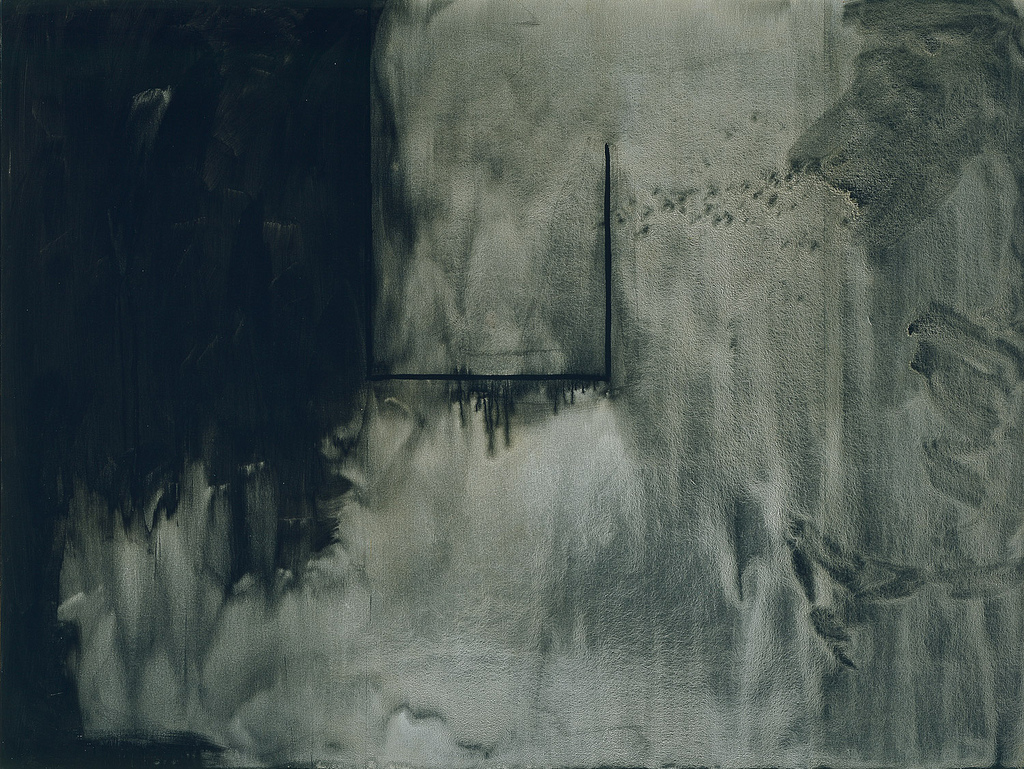Cody Wilson and the Printable Gun
by John Tangney (August 2018)

In Plato’s Cave No.1, Robert Motherwell, 1972
Cody Wilson was a law student at University of Texas-Austin when he decided to start printing guns using a 3D printer he ordered from a company called Stratasys. When the company found out what he was up to it repossessed the printer, but he persevered and, after much trial and error, his own company, Defense Distributed, successfully used a Stratasys printer to make a single-shot pistol that he called The Liberator. He was legally prevented from publishing the software needed to operate the printer, and the chapter describing the assembly process in the book he wrote about it was redacted for legal reasons, underlining the fact that this was a highly political publishing event.
For Wilson, the political is the personal; and Come and Take It is a work of autopoesis as much as it is a political tract. It pays great attention to the weather as a cinematic backdrop to the writer’s road trips to various gun dealers, engineers, and firing ranges around Austin. He also traveled to Europe to hang out with bitcoin radicals and court a Russian oligarch. The Liberator is framed as the end product of a journey from vanilla liberalism to post-leftist, crypto-anarchism, driven by disgust with the herd-instincts of his fellow citizens. These foils to his anarchist rebellion appear as hipster extras populating the UT lecture halls and the diners he visits late at night around Austin.
[1] positioning himself as exactly what Francis Fukuyama feared when he remarked in The End of History and the Last Man, that boredom rather than political revolution might be what undoes the neo-liberal millennium.[2]
[3] The culture war of many fronts in which they are engaged represents the decadence of the long drawn-out revolution that began with Gutenberg and Luther. Meanwhile, Wilson’s personal journey of disaffection draws on his undergraduate reading in continental philosophy to suggest that the arrival of the printable gun is a kind of unearthing of the thing in itself hidden behind the depthless phenomena of postmodernity, which is perhaps his way of admitting that what he’s distributing is an instrument of death. His autopoetic narrative about it is a self-undoing. At the end of the book, as he fires the gun in front of a BBC camera crew, he says he doesn’t know who he is any more, which sounds like a claim to have escaped from all of the available political identities in contemporary America.
Hannibal in which the detective and the killer finally elope to Argentina, obliterating the line between good and evil so that the narrative no longer stands on any kind of moral ground; it becomes unrealistic, light and empty. Or does it just enter a different moral universe?
***
(August 1, 2018) Addendum: The State Department’s green light for Wilson to publish his software has woken the legal establishment up to the significance of the ghost gun. He was blocked at the eleventh hour by Clinton nominee, Seattle District Judge Robert S. Lasnik, from proceeding with his plans. President Trump, hedging his bets and attempting to stay on the right side of the issue, suggested in a tweet that after consultation with the NRA he is provisionally of the opinion that printed guns are not a good idea. The fact that the President is taking advice from the NRA rather than from law enforcement, is presumably meant to signal to his base that his doubts about 3D guns don’t represent doubts about the 2nd amendment. At the same time it signals to monied interests in the weapons industry that their business isn’t in jeopardy.
[1] Cody Wilson, Come and Take It: The Gun Printer’s Guide to Thinking Free (New York: Gallery Press, 2016) e-book edition, 65.
[2] Francis Fukuyama, The End of History and the Last Man (New York:Free Press, 2006), 330
[3] Wilson, 94
[4] A phrase coined by John Keats in 1818
_____________________________________
John Tangney is originally from Ireland. He has a Ph.D in English from Duke University, and currently teaches in Russia at the University of Tyumen. His recent essays can be found in Literary Imagination, Litteraria Pragensia, Bright Lights Film Journal, Religion and the Arts, and The Time Traveller.
NER on Twitter @NERIconoclast